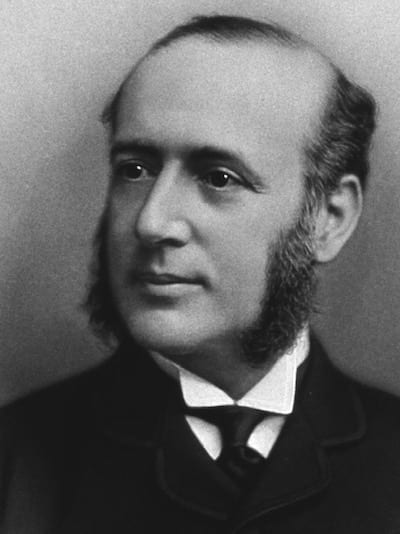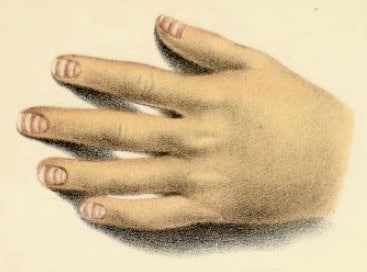Jacob Da Costa

Jacob Mendez Da Costa (1833-1900) was an American physician.
Global eclectic traveler, fluent in German and French and able to read Spanish, Portuguese, Italian and Dutch.
Eponymously affiliated with Da Costa Syndrome (1871)
Biography
- Born February 7, 1833 St. Thomas, West Indies (Danish colony)
- 1837 – traveled with family for education in Europe (Dresden gymnasium)
- 1845-1852 Studied medicine at Jefferson Medical College, USA
- 1852 – Returned to Europe working in Paris with Armand Trousseau (1801-1867), then on to work in Prague and Vienna
- 1853-1861 Physician to the dispensary of Moyamensing House of Industry, but struggled in private practice and preferred to teach medical students. Extensive teaching resulted in his very popular textbook ‘Medical Diagnosis‘ in 1864 (running to nine editions).
- 1861-1865 Acting Assistant Surgeon, Military Hospital in Philadelphia
- 1865 – Visiting Physician to the Pennsylvania Hospital
- 1866 – Chairman of Medicine, Jefferson Medical College
- 1872 – Professor of the Theory and Practice of Medicine, Jefferson Medical College
- Died on September 12, 1900
A teachers work does not die with him. It lives long after and may give great results.
Valedictory address, 1874.
Medical Eponyms
Da Costa Syndrome (1871)
Symptom-complex characterized by palpitation, dyspnea, precordial pain, fatigue, exaggerated emotional responses with increased cardiac awareness, and occasionally, systolic hypertension.
Also known as neurocirculatory asthenia, Da Costa Syndrome is a symptom-complex characterised by dyspnoea, palpitations, chest discomfort, fatigue and exaggerated emotional responses with increased cardiac awareness.
1871 – Da Costa defined as “irritable heart syndrome,” in cases from the American Civil War. He found the disorder, was not confined to the infantry but affected the cavalry and artillery so the packs were unlikely to be to blame. Although this was widely regarded as a disorder suffered by soldiers in wartime, Da Costa made the important observation that the same cluster of symptoms could also be seen in civilians.
Leuchonychia striata (1877)
Da Costa described transverse white bands the full width of the finger nail appearing after a relapse of typhoid fever. Coloured illustration of a hand the nails of which are traversed with several white bands, each corresponding to a relapse of the typhoid from which the patient had suffered.
Systemic illness variant of Mees lines

Major Publications
- Da Costa JM. Medical diagnosis. Lippincott 1864.
- Da Costa JM. On Irritable Heart; A Clinical Study of a Form of Functional Cardiac Disorder and Its Consequences. American Journal of the Medical Sciences 1871, 61: 17–52. [Da Costa Syndrome]
- Da Costa JM. On strain and over-action of the heart. Toner lecture, delivered May 14, 1874
- Da Costa JM. Relapses in Typhoid Fever. Transactions of the College of Physicians of Philadelphia. 1877; 3: 101-112 [leukonychia striata]
- Da Costa JM. Professional aspirations: valedictory address to the graduating class of Jefferson Medical College of Philadelphia. 1891.
- Da Costa JM. Biographical sketch of Dr. Austin Flint. Philadelphia: 1887
References
Biography
- Wooley CF. Jacob Mendez DaCosta: medical teacher, clinician, and clinical investigator. Am J Cardiol. 1982; 50(5): 1145-8.
- Bibliography. Jacob Mendes Da Costa. WorldCat Identities
Eponymous terms
- Longstreth M. Changes in the nails in fever, and especially in relapsing fever. Transactions of the College of Physicians of Philadelphia. 1877; 3: 113-125
[cite]
